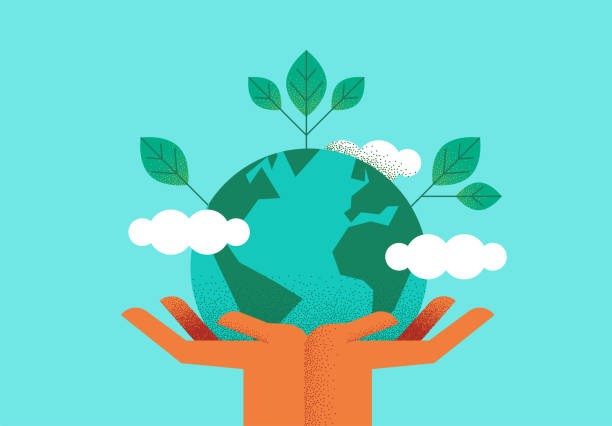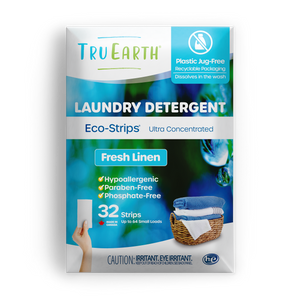In a world increasingly conscious of environmental impact, the choices we make in our daily lives matter. One area where we can make a significant difference is in our cleaning routines. Traditional cleaning tools, often made of plastic, contribute to pollution and environmental degradation.
This article explores sustainable alternatives to plastic cleaning tools, empowering you to embrace eco-friendly options without compromising on cleanliness.

The Problem with Plastic Cleaning Tools
Non-Biodegradability
Plastic cleaning tools pose a significant environmental challenge due to their non-biodegradable nature. Unlike organic materials, plastic persists for centuries, contributing substantially to the global plastic waste crisis.
Contribution to Plastic Waste Crisis
The high demand for convenient cleaning solutions fuels the relentless production of plastic cleaning tools. This manufacturing process, often reliant on fossil fuels, significantly amplifies the carbon footprint associated with these items.
Release of Harmful Chemicals
Photodegradation of plastic, accelerated by exposure to sunlight, releases chemical additives used in its manufacturing. These toxins may leach into the soil and water, posing threats to ecosystems and wildlife.
Impact on Landfills
Improper disposal exacerbates the strain on landfills already burdened with non-biodegradable waste. Plastic cleaning tools contribute to the longevity of landfills, preventing the natural breakdown of waste.
Ocean Pollution
Plastic cleaning tools find their way into oceans, becoming integral to the pervasive plastic debris problem. Marine life is adversely affected, and the fragmentation of plastic into microplastics poses a severe threat to the entire aquatic ecosystem.
Microplastics in the Food Chain
Microplastics resulting from the breakdown of plastic in oceans infiltrate the food chain. Organisms at various levels, including fish consumed by humans, bear the brunt of this pervasive pollution.
1. Eco-Friendly Cleaning Brushes: Tackling the Scrubbing Dilemma
Traditional plastic scrub brushes are durable but detrimental to the environment. Swap them out for eco-friendly alternatives made from materials like bamboo or sustainably sourced wood. These brushes effectively tackle tough stains without compromising on durability. Plus, when their bristles wear out, you can replace only the bristle component, reducing overall waste.
2. Biodegradable Sponges: Wiping Away Plastic Pollution
Sponges are cleaning staples, but their synthetic counterparts contribute to microplastic pollution. Opt for biodegradable sponges made from natural materials like cellulose or plant fibers. These sponges effectively absorb liquids and scrub surfaces while being kind to the environment. After their useful life, they can be composted, leaving no trace of plastic behind.

3. Reusable Microfiber Cloths: A Sustainable Wiping Solution
Microfiber cloths, often made from synthetic materials, shed microplastics during use and washing, further contributing to environmental pollution. Choose reusable microfiber cloths made from natural fibers like cotton or bamboo. These alternatives offer the same effective cleaning capabilities but with the added benefit of being machine washable and long-lasting.
4. Cornstarch-Based Trash Bags: Transforming the Disposal Process
The sustainability journey extends beyond cleaning tools to disposal methods. Traditional plastic trash bags persist in landfills for centuries. Explore cornstarch-based trash bags that are biodegradable and compostable. While still offering the durability needed for waste disposal, these bags break down naturally, minimizing environmental impact.
5. Recycled Plastic Broom Heads: Giving Plastic a Second Life
If you already have a trusty broom, consider replacing only the broom head with a recycled plastic option. These broom heads are made from post-consumer recycled plastic, diverting plastic waste from landfills and promoting the circular economy. They provide the same sweeping efficiency while contributing to a reduction in the demand for new plastic production.
6. Glass or Stainless Steel Spray Bottles: Elevating Your Cleaning Arsenal
Traditional plastic spray bottles are often a single-use item and contribute to plastic waste. Invest in glass or stainless steel spray bottles that are not only durable but also reusable. These alternatives can be refilled with eco-friendly cleaning solutions, reducing your reliance on single-use plastic containers and minimizing environmental harm.
7. Natural Fiber Mop Heads: Mopping Up Plastic Pollution
Mops with synthetic fibers shed microplastics during use, adding to the plastic pollution burden. Transition to mop heads made from natural fibers like cotton or jute. These materials effectively clean floors while being biodegradable and compostable at the end of their life cycle, ensuring a more sustainable mopping experience.

A Cleaner Future, One Sustainable Choice at a Time
Embracing sustainable alternatives to plastic cleaning tools is a tangible and impactful way to contribute to a cleaner planet. By choosing eco-friendly options, you not only reduce your environmental footprint but also support industries and practices that prioritize the health of our planet. As we collectively shift toward greener cleaning habits, we pave the way for a more sustainable future, where cleanliness goes hand in hand with environmental stewardship.


